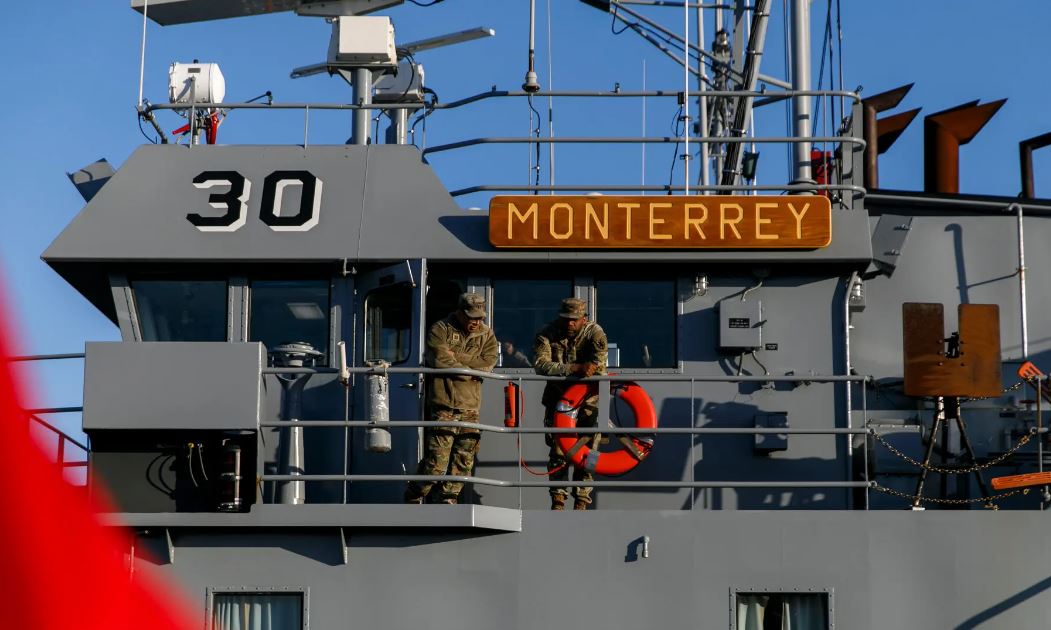In a bid to alleviate the humanitarian crisis in Gaza, US Army engineers have commenced construction of a floating pier and causeway off the coast, aiming to facilitate the delivery of essential aid to the enclave’s residents. Once completed, the project has the potential to supply up to two million meals per day, according to Defense Department officials.
The construction of the initial stages of the temporary pier and causeway at sea is progressing as anticipated, in alignment with projections by Pentagon officials, remarked Maj. Gen. Patrick S. Ryder, the Defense Department’s press secretary. The endeavor seeks to circumvent Israeli restrictions on land convoys into the besieged strip, thereby enabling the seamless transportation of vital humanitarian assistance.
General Ryder reiterated that the project, initiated by President Biden last month, is on track for completion early next month. The facility is envisioned to comprise an offshore platform for aid transfer from ships and a floating pier for onward delivery to the shore.
While aid organizations have welcomed the initiative, they emphasize that the maritime project cannot fully substitute land convoys, which have faced disruptions amid the ongoing conflict. Security concerns have also been raised by some US military officials, particularly in light of a recent mortar attack in the vicinity of the pier construction site. However, General Ryder clarified that the attack occurred before any US forces had commenced operations in the area.
Construction of the floating pier is underway alongside an Army ship off the Gaza coast. Given the vulnerability of large vessels in the region, armed escorts are deployed, especially as they approach Gaza’s coastline, as highlighted by defense officials.
The United Nations has sounded the alarm, warning of imminent famine in Gaza by the end of May. Aid workers have cited challenges at border crossings, including lengthy inspections of trucks, limited operating hours, and protests, hindering the smooth flow of assistance. Israeli authorities have refuted allegations of impeding aid distribution, placing responsibility on the UN and aid groups for any logistical delays.
Senior Biden administration and military officials elaborated on the intricacies of the plan during a Pentagon briefing, outlining the assembly process of the pier and causeway. Army engineers are assembling the facility aboard Navy ships in the eastern Mediterranean, with at-sea construction commencing on Thursday.
Dubbed J-Lots (Joint Logistics Over the Shore), the project entails a complex logistical framework for aid delivery without deploying American troops on the ground in Gaza. Aid shipments are loaded onto Navy vessels in Cyprus and transported to the causeway at sea, where they are offloaded and subsequently transferred to Gaza via shuttle boats operated by aid organizations or other entities.
The causeway, distinct from the floating pier, will be anchored to the Gaza shore by an engineering unit from the Israeli military, according to a senior military official. Security for the operation will be provided by an Israeli brigade dedicated to safeguarding American troops and aid workers involved in the project.
The operation aims to facilitate the daily delivery of aid equivalent to approximately 90 trucks, with plans to ramp up to 150 trucks per day at full operational capacity. The identity of the third-party entity responsible for truck transportation remains undisclosed.
As efforts intensify to address the humanitarian crisis in Gaza, the construction of the floating pier represents a critical step towards ensuring the timely and efficient delivery of vital aid to those in need. Despite the challenges posed by the conflict-ridden region, the concerted efforts of international stakeholders underscore a commitment to humanitarian relief and support for vulnerable populations.

